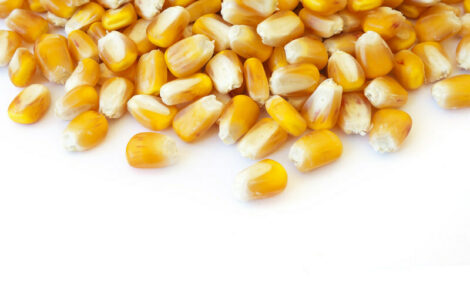



Prospects for Agricultural Markets and Income in EU: 2012-2020
EU agricultural commodity prices are expected to stay firm over the medium term, supported by factors such as the growth in global food demand, the development of the biofuel sector and a prolongation of the long term decline in food crop productivity growth. The contraction of the pig industry this year is forecast at 3.2 per cent.EU commodity markets are projected to remain balanced - on average - over the outlook period, without the need for market intervention. Prospects for agricultural income grow at EU level during the outlook period, resulting from continuing decline in labour input rather than from income increases at sector level.
Policy and Macroeconomic Assumptions
The present medium term outlook for EU agricultural markets and income is based on a status quo assumption for agricultural and trade policy. The present proposals of the Commission to reform the Common Agricultural Policy (CAP) are not taken into account, but the CAP is assumed to follow the Health-Check decisions and global trade policy is assumed to respect the Uruguay Round Agreement on Agriculture. Macroeconomic assumptions include negative EU GDP growth of -0.3 per cent in 2012, followed by a gradual return to a modest growth of about two per cent per year as of 2015, and the exchange rate remaining at current levels until 2014, with a subsequent slight appreciation of the Euro to around 1.35 US$/€ in 2022.
Arable Crops
The medium term prospects depict a relatively positive outlook for arable crops in
the EU as a result of solid world demand and firm prices. In the EU, market
developments for arable crops are driven by the biofuel market, which is the most
dynamic demand factor, as EU feed and food demand are expected to show only a
marginal increase.
The medium term outlook for EU cereal markets is characterised by tight market
conditions, low stock levels and prices remaining above historical levels. These
developments are driven by moderate supply growth reaching 309 million tonnes by
2022, mainly the result of low annual yield growth rates (0.9 per cent on average), and an
increase in the domestic use of cereals in the EU, most notably due growing
demand by the ethanol and biomass industry in the framework of the Renewable
Energy Directive (RED). Some reallocation between crops in the context of a stable
overall cereal area is expected, with maize and common wheat further increasing
their share (up to 17 per cent and 42 per cent, respectively) at the expense of other cereals. The
growing demand for rice will be satisfied by increasing imports further reducing the
EU self-sufficiency to 56 per cent.
Similar drivers impact upon the medium term prospects for the EU oilseed markets,
which show a positive outlook for producers with strong demand and high oilseed
oil prices. Supply growth is driven by moderate yield growth and to a lesser extent from a slightly expanding oilseed area. The expected increase in domestic use of
oilseeds in the EU would also be driven by additional demand for vegetable oil as
biodiesel feedstock.
Prospects for EU sugar markets are mixed. The growing demand for ethanol in the
framework of the RED supports a growth in sugar beet production geared towards
ethanol. On the other hand, for food consumption, isoglucose is expected to
increasingly replace beet sugar, following the expiry of quotas in 2015. The expiry
of the sugar quota will lead to a reduction of the domestic sugar price in the EU and
make imports, including preferential access, less attractive.
Overall, the projected growth in domestic consumption of cereals, oilseeds and
sugars is largely dependent on the assumptions for bioenergy use. Regarding
biofuel, it is assumed that progress towards meeting the Renewable Energy
Directive (RED) target of 10 per cent of renewables in energy share will continue, but the
target will be met after 2020. Nevertheless, the production and use of biofuels will
increase by about two-thirds, reaching a 8.5 per cent share by 2022.
* "The new animal welfare requirements in the pig sector are also expected to play an important role in the near future." |
Meat
The EU market is likely to be affected by the on-going economic downturn and
historically high levels of unemployment, which tend to push EU demand towards
cheaper meat options.
The new animal welfare requirements in the pig sector are
also expected to play an important role in the near future. As a consequence, total
EU meat production, after having increased during both 2010 and 2011, will
contract by two per cent over the next two years. After this reduction, total meat production
is projected to steadily recover over the 10-year horizon and to reach almost 45
million tonnes in 2022, approximately the same level recorded in 2011.
Meat production is mainly driven by increasing poultry and pork meat consumption,
as well as by a firm external demand and higher prices. On a per-capita basis, EU
meat consumption in 2022, at 82.6kg, would be at approximately the same level
as it was in 2009 and one per cent lower than in 2011, despite the improved macroeconomic
prospects. Pig meat is expected to remain the preferred meat in the EU with 40.8kg per capita consumption in 2022, compared to 24.1kg for poultry, 15.7kg for beef/veal and less than 2.0kg for sheep and goat meat.
The net trade position of the EU is projected to deteriorate over the outlook period,
driven by an increase in meat imports (of beef/veal, sheep and goat and poultry
meats) and a parallel decline in exports of poultry. Aggregate meat imports would
grow by 5.2 per cent (2022 versus 2011) and exports would decline by 6.8 per cent, leaving the EU,
nevertheless, a net exporter of pig and poultry meats in 2022.
Pig Meat: the Most Consumed Meat in EU
The contraction in the pig herd in 2011 compared to 2010 (-1.7 per cent), and more markedly in breeding sows (-3.2 per cent), generates a marginal decline in EU pig meat production in 2012 (-0.4 per cent). In 2013, the decrease is expected to be even larger (-3.2 per cent), as it will cumulate with the impact of mandatory welfare standards coming into force as of January 2013 and of higher feed costs incurred due to the US drought.

After its fall in 2012 and 2013, pig meat production is projected to resume its
growth from the second half of 2014, as production is expected to respond to high
prices, with farmers progressively adjusting to the new welfare requirements. By
2022 pig meat production would roughly settle at the level of 2011, i.e.
approximately 23 million tonnes.
Increased feed prices as a result of the drought in the US during the first half of
2012 were compensated by high pig meat prices which led to stable producers'
margins. After reaching the historical high of €1,900 per tonne in September 2012 (31 per cent
more than the 2007-2011 average), prices fell slightly in October (-0.5 per cent against
the previous month). Piglet prices have so far followed the seasonal trend and are
situated around €470 per tonne.
As regards trade, January-August 2012 data confirm stronger EU exports, five per cent
higher than the same period last year, mainly due to the weak Euro and the strong
global demand, particularly from China, Russia, Ukraine and Japan. Overall, 2012 is
projected to end with an estimated one per cent increase in exports compared to the already
very high level registered in 2011.
Lower availabilities in 2013 would trigger a projected decline of 15 per cent in EU exports,
followed by a rebound in 2014, when production is expected to recover; this trend would be of short duration as exports would then start decreasing again (-9 per cent on
aggregate over 2011-2022).
Overall EU pig meat consumption is expected to increase by 4.3 per cent (+3 per cent and +10 per cent
in the EU-15 and EU-N12, respectively). Although EU per-capita consumption would
decrease by 1.6 per cent between 2011 and 2022, pig meat would continue to represent
half of EU total meat consumption. It is worth observing that, at world level, poultry
meat would represent the most consumed meat, overtaking pig meat (on average
14.5kg per person versus 12.7kg per person).
The EU is more than self-sufficient in pig meat, producing about 110 per cent of its
domestic consumption and this trend is expected to continue throughout the
outlook period. However, increased competition from other producing countries (for
example, China) would see the EU production share in global production slowly
decline.
Agricultural Income
While the medium-term changes in the price and volume components of the arable
crops and major livestock sectors have been established in line with the market
projections, in the remaining agricultural sectors – such as fruit, vegetables, wine
and olive oil – it was assumed that income would follow a development related to
its historical trend. Compared to a five-year average of the period 2008-2012, the
EU-27 agricultural income per annual working unit in real terms would be 17.5 per cent
higher in 2022 compared to the base period. This positive trend is the result of an
expected sharp deterioration of the factor income in real terms at sector level
(-15.6 per cent), which is more than compensated by a reduction in the workforce
employed in agriculture (-28.4 per cent).
Against the background of an overall positive trend in real agricultural income per
worker, marked differences appear between the EU-15 and EU-N12 aggregates. In
the EU-15, agricultural income in 2022 is expected to be roughly unchanged
(+0.1 per cent) compared the base period. On the other hand, in the EU-N12, agricultural
income continues to display a positive trend, almost 55 per cent higher than the reference
period by 2022, thus slightly converging towards the EU average.
Caveats
The outlook for EU agricultural markets and income presented in this publication is
based on a specific set of assumptions regarding the future economic, market and
policy environment. In addition, the baseline assumes normal weather conditions,
steady yield trends and no disruptions caused by factors like animal disease
outbreaks or food safety issues.
The projections are not intended as a forecast of future outcomes but instead as a
description of what may happen given a specific set of assumptions and
circumstances, which at the time of making the projections were judged plausible.
As such, they serve as a reference for policy simulations. It follows that the baseline
projections depict rather smooth market developments, while in reality markets
tend to move along a more volatile path as observed in the past and particularly
over recent years.
An uncertainty analysis accompanies the presented baseline to quantify some of the
uncertainties and to provide background on variation of the results. The uncertainty
scenarios analysed focus on the impacts of i) the variability of input costs at
regional level on farmers' income, ii) climate change on the agricultural sector, and
iii) different EU biofuel policy scenarios on feedstock markets.
Further ReadingYou can view the full report by clicking here. |
January 2013








